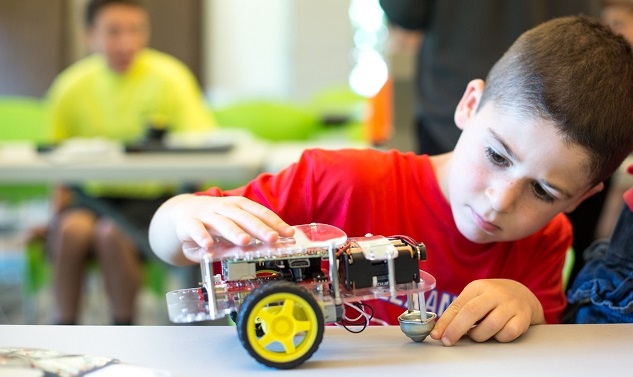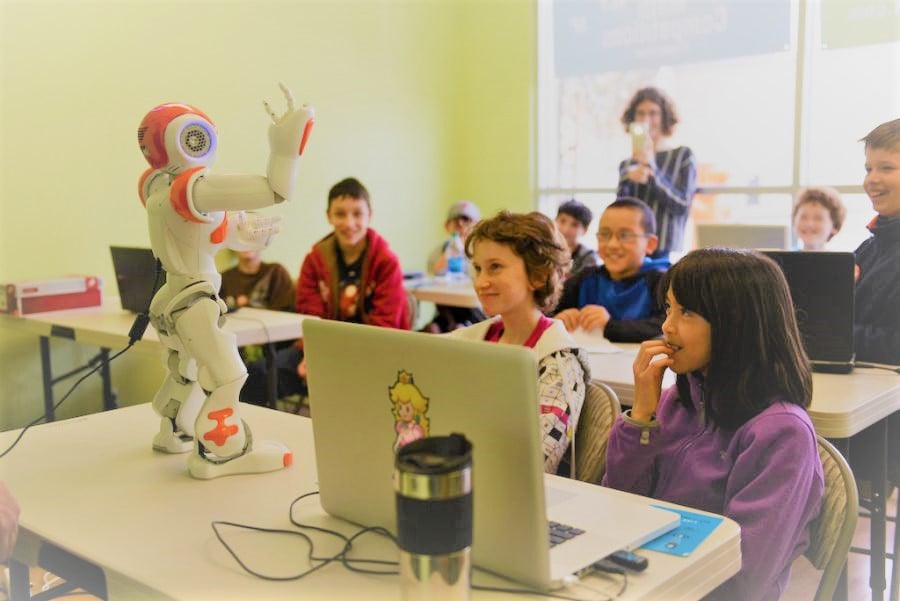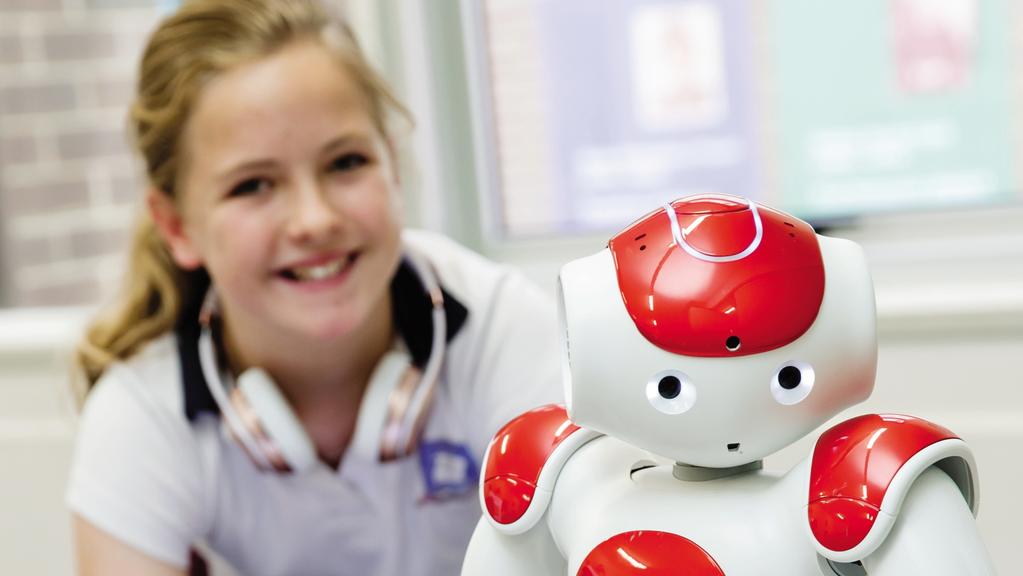RobotLAB Blog
Everything You Need To Know About Robotics in Businesses
3 Ways to Revolutionize STEM Education in the United States
According to the STEM (Science Technology, Engineering and Math) Coalition, there are 26 million STEM jobs in the U.S., comprising 20 percent of all jobs. By 2020, there will be 9.2 million STEM jobs in the U.S. Despite the need for these workers, only 45 percent and 30 percent of high school seniors are prepared for college-level math and science courses, respectively.

- 0 Comments
- Sep 6, 2019 10:00:00 AM
- Posted by Natalia Galvis
- Topics: STEM, Curriculum, steam, teachers, STEMchat, Edchat
4 Ways Project-Based Learning Prepares Students For the Future of Work
There are many reasons why project-based learning may be the best pedagogy for all students. Indeed, PBL is intended to be engaging, collaborative, tech-ready, student-owned and personalized. But, there may not be a better reason for PBL than that of preparing all students for a rapidly changing world – especially the future of work.

- 0 Comments
- Sep 5, 2019 10:00:00 AM
- Posted by Natalia Galvis
- Topics: STEM, Curriculum, Problem Based Learning (PBL), steam, STEMchat, PBL, Edchat
Why is STEM Education So Important?
According to the U. S. Department of Commerce, STEM occupations are growing at 17%, while other occupations are growing at 9.8%. STEM degree holders have a higher income even in non-STEM careers. Science, technology, engineering and mathematics workers play a key role in the sustained growth and stability of the U.S. economy, and are a critical component to helping the U.S. win the future. STEM education creates critical thinkers, increases science literacy, and enables the next generation of innovators.

- 0 Comments
- Sep 4, 2019 10:00:00 AM
- Posted by Natalia Galvis
- Topics: STEM, Curriculum, steam, teachers, STEMchat, Edchat
Classroom field trips via VR become a national trend
It’s back-to-school season and students could be visiting the majesty of the Grand Canyon, the convolutions of the human brain, the depths of the ocean, or even the barren landscape of Mars — all without ever leaving the classroom. Indeed, as technology grows and becomes more readily accessible, more teachers are taking their students on field trips using virtual reality.

- 0 Comments
- Sep 3, 2019 11:56:35 AM
- Posted by Natalia Galvis
- Topics: STEM, Curriculum, steam, teachers, VR, STEMchat, Edchat
How to Integrate STEM into Your Curriculum
STEM education is at the forefront of education, and as teachers it’s our job to ensure our students are getting and gaining the knowledge they need in order to have a successful future. STEM, otherwise known as science, technology, engineering, and math, is an essential component of 21st century education.

STEM-proficient students are logical thinkers and are able to answer complex questions and develop solutions for those problems. These are skills our students needs in order to keep up with other diverse countries. Here we’ll take a brief look at how you can ensure you’re integrating STEM education into your curriculum.
- 0 Comments
- Aug 30, 2019 10:07:00 AM
- Posted by Natalia Galvis
- Topics: STEM, Curriculum, steam, teachers, STEMchat, Edchat
Boosting Your Child's STEM Skills With Robotics
"STEM" is an important educational topic sweeping through homes and schools across the world. STEM is an acronym representing the huge push to teach and involve students in science, technology, engineering, and math. Due to struggling test scores and low enthusiasm in many schools, both parents and teachers are striving to find new and better ways to create greater interest in these critical learning topics.

These classroom subjects give our children the keys to a booming future in one of these science-driven fields. Although there are many ways to help encourage a STEM education, robotics education programs are allowing children as young as 6 to learn valuable problem-solving STEM skills.
- 0 Comments
- Aug 29, 2019 10:00:00 AM
12 Inspiring STEM Books for Girls
Science, technology, engineering, and math are more important than ever, so we’ve put together a list of books to encourage girls to persevere in these subjects.

- 0 Comments
- Aug 28, 2019 10:26:00 AM
- Posted by Natalia Galvis
- Topics: STEM, steam, STEMchat, WomeninSTEM, Edchat, girlsinSTEM, AI
The Effects of Artificial Intelligence on Education
Artificial intelligence can be defined as the ability of computer systems to perform tasks and activities that usually can only be accomplished using human intelligence. In the world of education, this technology is revolutionalizing schools and classrooms, making educators jobs a lot easier.

- 0 Comments
- Aug 26, 2019 10:15:00 AM
- Posted by Natalia Galvis
- Topics: STEM, steam, STEMchat, Edchat
11 Programming Languages to Learn to Open Doors

Learning programming languages can open doors to new opportunities. But with so many languages out there, it’s imperative to pick the appropriate ones to best suit your career, personal goals and interests. Computer programming languages are essential to know if you have an interest in the various careers available in development, programming, ethical hacking, analysis, and engineering, among others like DevOps.
In this guide, we explore the various facets that set programming languages apart, the reasons to learn each one, the languages best suited for different career paths and an exhaustive programming languages list.
- 0 Comments
- Aug 23, 2019 10:00:00 AM
- Posted by Natalia Galvis
- Topics: STEM, steam, STEMchat, Edchat
7 Benefits of STEM Education
STEM education in the U.S. is increasing in popularity—more schools are implementing STEM learning into their curriculum and making it an integral part of what they teach. In this article, we will discuss the 7 benefits of STEM education

- 0 Comments
- Aug 22, 2019 10:00:00 AM
- Posted by Natalia Galvis
- Topics: STEM, steam, STEMchat, Edchat
Relevant Posts
- Augmented Reality: A Tool for Teaching Students Robot Programming
- Fostering Innovation Through Youth Education in STEM and EdTech
- How Parents Can Foster STEM Learning Beyond the Classroom
- How Robotics Cultivates a Deep Understanding of Mathematics in Students
- RobotLAB Receives EDTech Chronicle 2023 ‘BESTIE’ Award for Landmark Partnership with American Samoa Dept. of Education.
Subscribe to Email Updates
-
I Want To Learn MoreADDITIONAL INFORMATION
